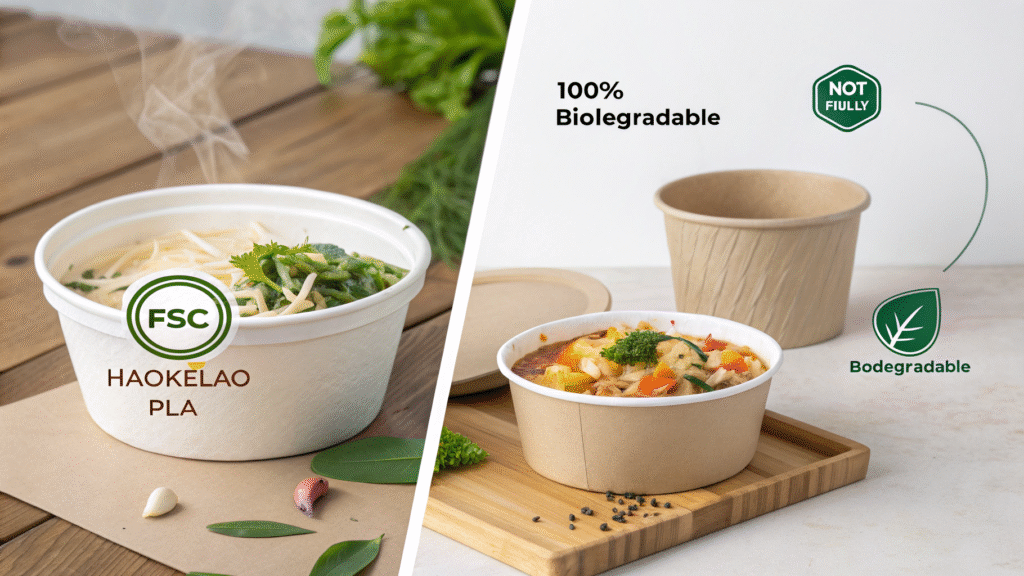You want bowls that are safe for hot soup, but you also care about your brand's environmental footprint. Can paper soup bowls truly be an eco-friendly choice?
Yes, modern paper soup bowls made from FSC-certified pulp1 and PLA plant-based linings are a renewable, biodegradable2, and lower-carbon alternative3 to plastic. They meet global regulations and fit today's eco-conscious dining trends.
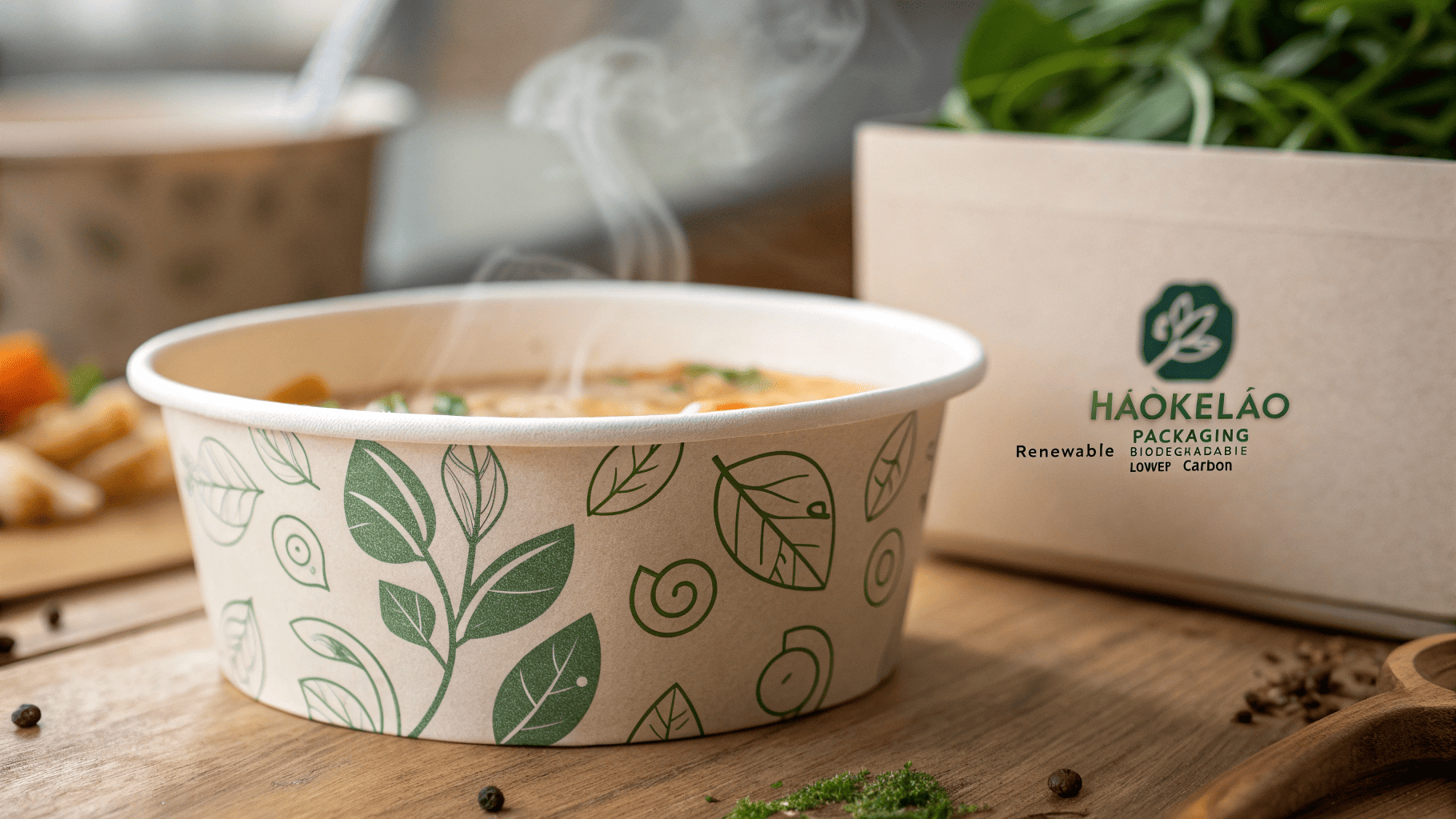
I have worked with brands in China, Japan, and the USA who all switched to high-quality paper bowls for both sustainability and performance. The raw material comes from renewable forests, not oil. The coatings can break down without leaving microplastics4. And carbon emissions over the entire product life are much lower than plastic containers. Let’s walk through the big questions I get most from clients.
What kind of bowls are best for soup?
You need a bowl that can handle heat, resist leaks, and fit your environmental goals.
The best soup bowls are thick, food-grade paper bowls with PE or PLA coating5. Bagasse fiber bowls6 with PLA lining are also a top choice for brands that want both performance and compostability7.
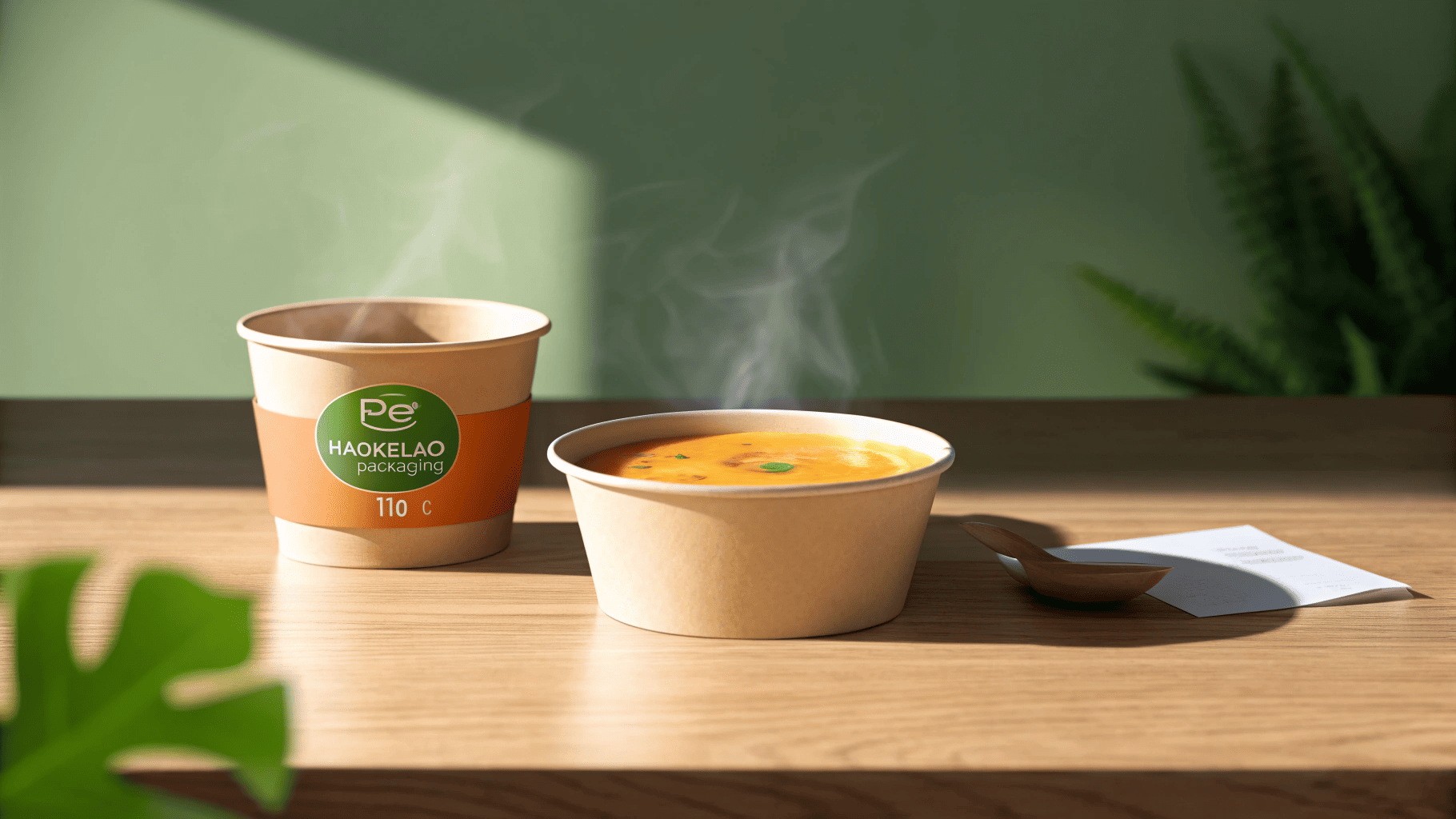
In my work, PE-coated paper bowls remain the industry’s heat-resistance champion8 for long holding times and boiling soups. PLA-coated paper bowls are slightly less heat-tolerant but answer the call for biodegradability, especially where composting facilities exist. Bagasse bowls, made from sugarcane fiber, are a premium upgrade for eco messaging: they hold hot soup with the strength of paper, decompose in compost, and visually stand out.
Material Comparison
| Material | Heat Resistance | Eco Profile | My Professional Take |
|---|---|---|---|
| PE-coated paper | 105–110°C | Recyclable in some streams | Strong and reliable for delivery and dine-in |
| PLA-coated paper | 90–100°C | Fully compostable in industrial settings | Best for sustainable brand image |
| Bagasse + PLA coating | 90–100°C | Compostable, made from agricultural waste | Premium eco appeal with performance |
| PE + foil layer paper | 110–120°C | Recyclable, long shelf life | Ideal for extreme heat like hotpot base |
Why are some bowls not food-safe?
Many low-cost bowls look the part but fail when exposed to boiling soup.
Some bowls are unsafe because they use wax coating for cold items or are unlined. Wax melts at 50–60°C, and uncoated paper quickly soaks, leaks, and collapses.
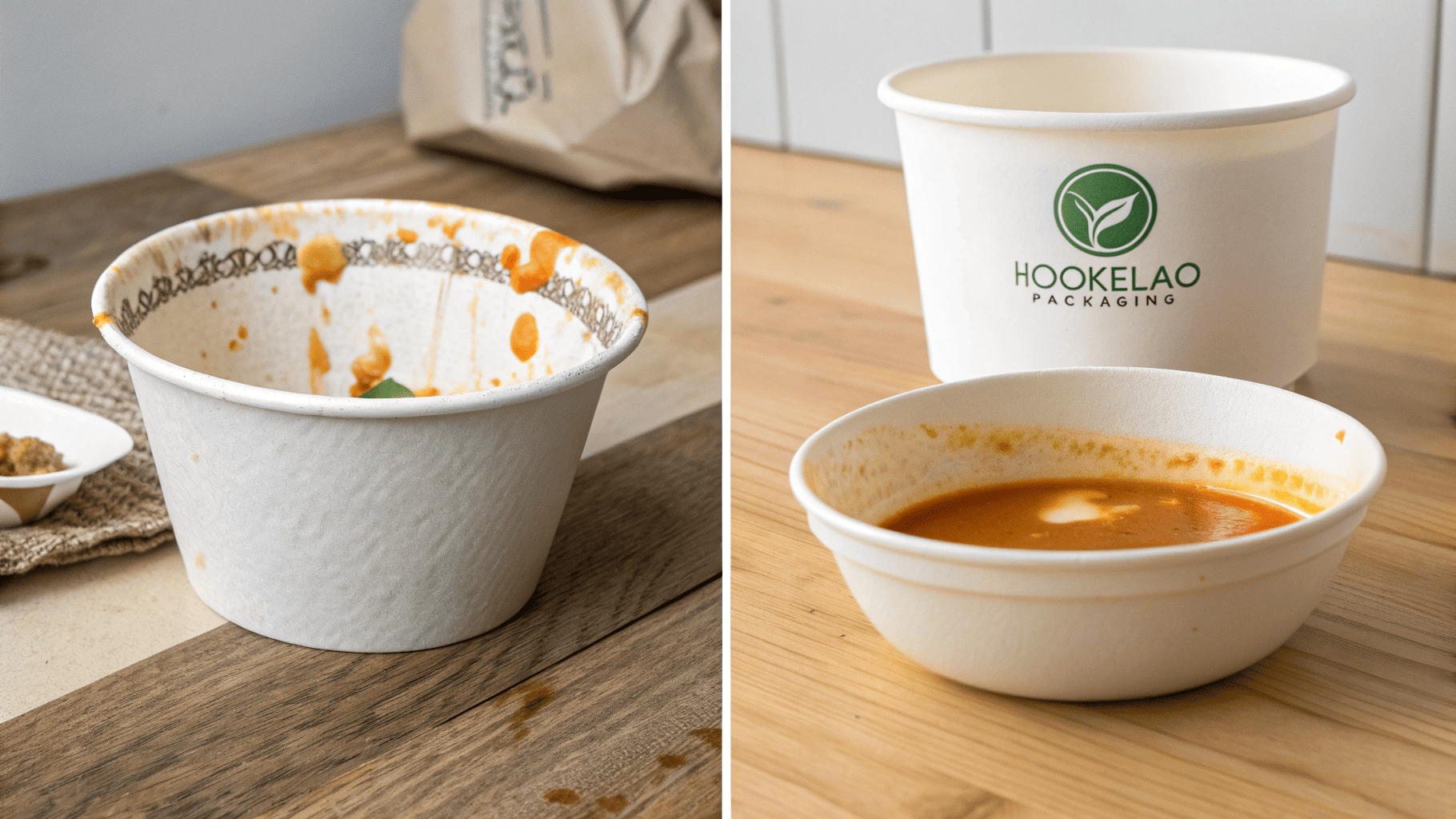
I’ve seen cafes use leftover ice cream tubs for noodle soup—customers complained of an oily surface and soggy paper walls. In the worst cases, non-food-grade paper may contain recycled pulp with printing ink and fluorescent agents, which can migrate into food when hot.
Unsafe Bowl Types
- Wax-coated cups — for ice cream only; heat melts the wax into soup.
- Uncoated paper — not liquid-safe.
- Reused packaging — may contain inks or contaminants.
Always confirm with your supplier that the bowls are certified for hot food contact.
Is paper 100% biodegradable?
This is one of the most common misconceptions I hear every month.
Paper bowls with PLA coating are 100% biodegradable2 in industrial composting, breaking down without microplastic. PE-coated bowls are not fully biodegradable2 but can be recycled in some paper streams.
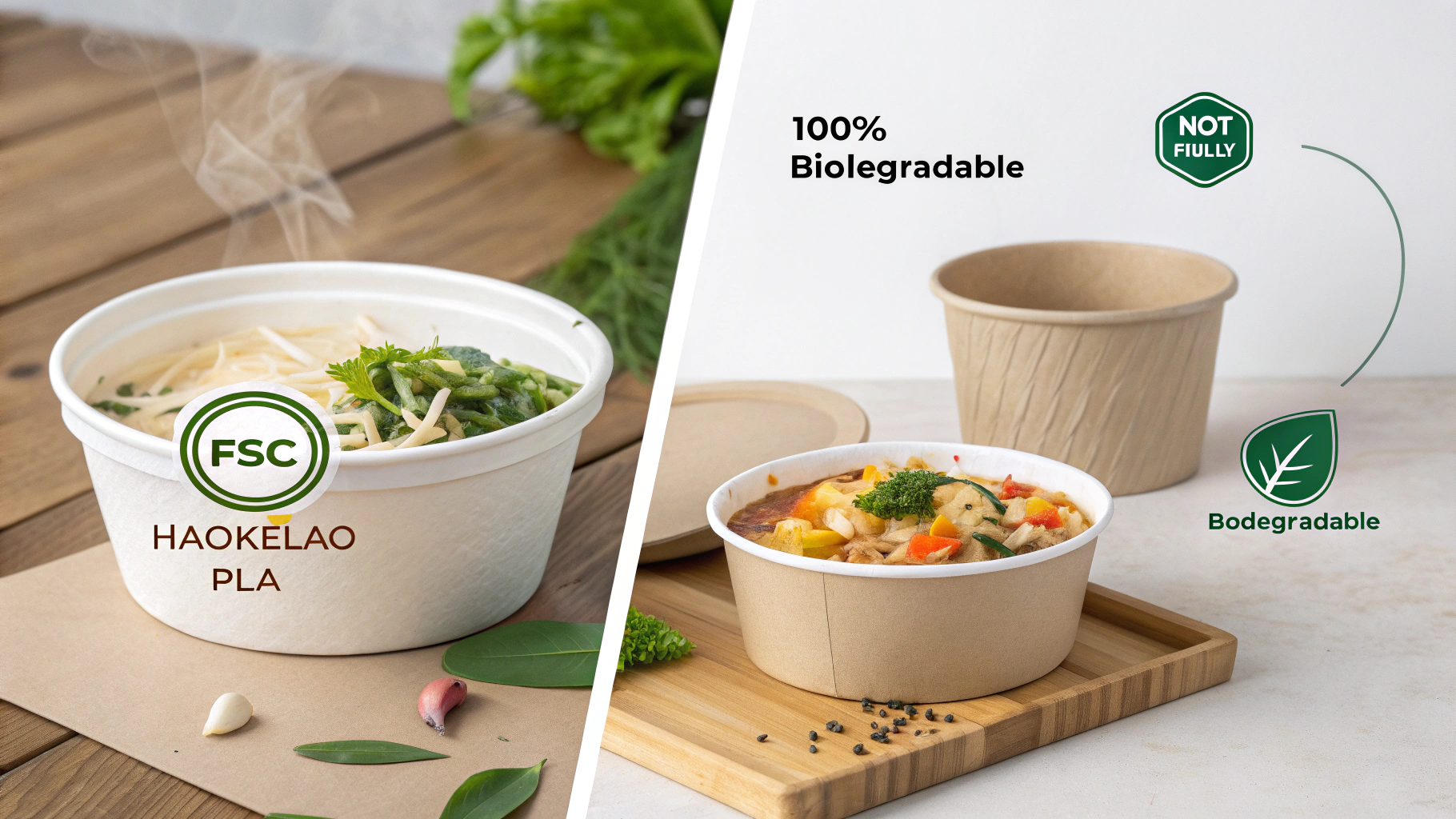
Plain paper without lining degrades quickly, but it’s unsuitable for soup. That’s why we add coatings for barrier protection. PLA coatings, made from plant starch, break down under high heat and humidity in compost facilities. PE coatings are oil-derived and persist longer, but mills can separate them in recycling equipped for poly-lined paper.
The Pro-Environment Case for Paper Soup Bowls
Over 20 years, I’ve helped businesses weigh environmental performance against cost and durability. The best pro-environment arguments are:
Derived from Renewable Resources
High-quality soup paper bowls often use FSC-certified wood pulp from sustainable forests9, unlike petroleum-based plastics.
Biodegradable & Recyclable
PLA plant-based coating allows full degradation in industrial composting without forming microplastics4. Some PE-coated bowls enter paper recycling streams.
Lower Carbon Emissions
Lifecycle carbon footprint is 30%–60% lower than plastic utensils, helping food brands meet low-carbon goals.
Compliant with Regulations
Supports rules like China’s "Plastic Ban" and the EU SUP Directive, helping brands expand in domestic and overseas markets.
Real-World Case Studies
| Case | Switch Made | Measured Environmental Impact | Added Brand Value |
|---|---|---|---|
| Domestic Suan La Fen chain (China) | Plastic → thick PLA-coated paper bowls | Cut ~18 tons of single-use plastic in 6 months | Eco mark on takeaway boosted user ratings by 0.3 |
| 7-Eleven Japan | PP bowls → compostable paper bowls for oden & miso | Cut ~200 tons of plastic annually | CSR highlight in annual report |
| US Airline | Plastic cup → lightweight paper soup bowl in premium cabins | Cut 2.5 kg plastic per flight + saved jet fuel | Sustainability noted in passenger feedback |
Market Trends Driving Adoption
- Policy Push — Plastic bans and eco laws boost compostable paper bowl demand.
- Delivery Economy — Hot soup takeaway traffic rising, lifting paper bowl sales.
- Green Consumerism — Younger diners gravitate towards brands that use eco packaging.
Conclusion
Yes—soup paper bowls can be genuinely eco-friendly when made from certified renewable paper with PLA coating or bagasse fiber. They protect brand image, meet regulations, and support a lower-carbon dining future.
Understanding FSC-certified pulp helps you choose truly sustainable products that support responsible forestry. ↩
Learn about biodegradable materials to make informed choices that reduce environmental impact. ↩
Discover lower-carbon alternatives to plastic that can help your brand reduce its carbon footprint. ↩
Explore the issue of microplastics to understand their impact on health and the environment. ↩
Explore the differences between PE and PLA coatings to select the best option for your needs. ↩
Find out how Bagasse fiber bowls can enhance your eco-friendly packaging strategy. ↩
Understanding compostability can guide you in choosing packaging that is environmentally responsible. ↩
Learn about materials that can withstand high temperatures, ensuring food safety and quality. ↩
Learn about sustainable forests to appreciate the source of eco-friendly materials. ↩
